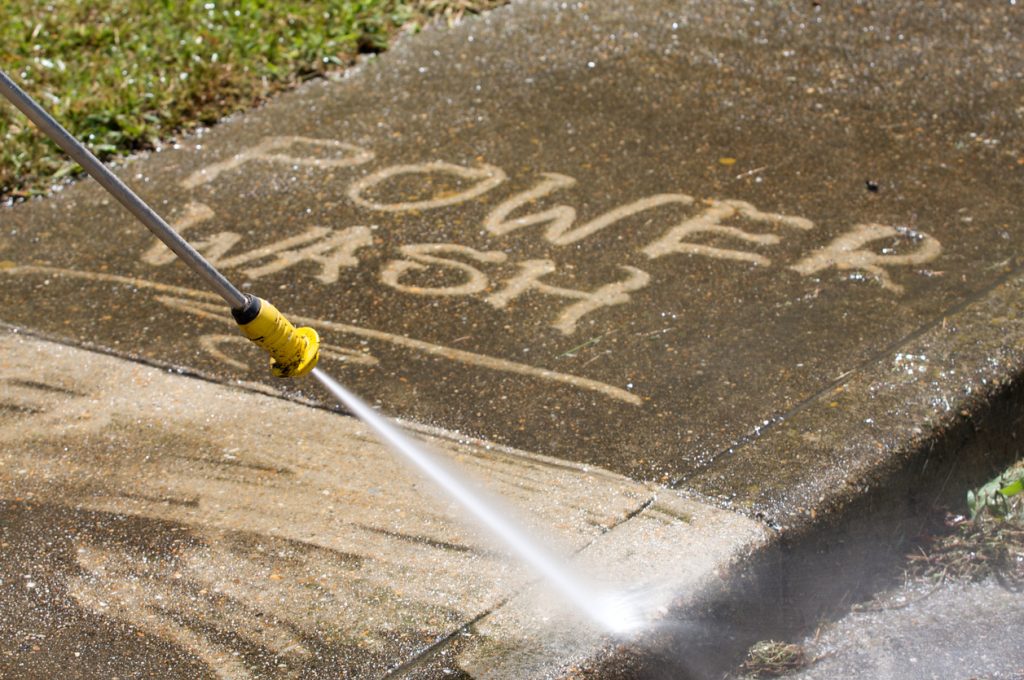Maintaining the facade of your property is crucial not only for visual attractiveness but also for maintaining its equity and avoiding harm over the long haul. One of the most efficient methods to keep your residence looking its greatest is pressure washing. This powerful cleaning technique uses intense water to wash away soil, grime, and other clutter from different surfaces, enhancing the overall appearance of your property.
For property owners seeking a tidy and welcoming exterior, understanding what pressure washing is and how it can improve your place is important. From improving exterior attractiveness to extending the longevity of your surfaces, pressure washing offers a variety of benefits. In this manual, we will discuss the ins and outs of pressure washing, covering everything from the difference between pressure and soft washing to the best practices for effectively washing your home without causing damage. Whether you are contemplating a DIY approach or contracting experts, our advice will help you make informed decisions for your home's exterior care.

Grasping Pressure Washing
Pressure washing is a cleaning method that employs water at high pressure to eliminate soil, filth, fungus, biofilm, and various contaminants from various surfaces. This technique is very effective for reviving the look of outside areas such as exterior panels, carports, terraces, and decks. By employing a specially crafted machine, property owners can achieve a thorough cleaning that is often unattainable with traditional cleaning techniques. This method not only upgrades the visual appeal of your home but also assists in the upkeep and life span of its surfaces.
For those newcomers to this cleaning solution, it is crucial to grasp the basic workings behind pressure washing. The gear consists of a power source that drives a pump, which in turn compresses water from a regular water line. The water under pressure is then expelled through a spray nozzle, creating a narrow spray capable of removing tough stains and impurities. This system can be modified to suit different surfaces, allowing for a tailored cleaning approach that can manage various types of grime.
When evaluating pressure washing, it's necessary to differentiate it from gentle washing, another cleaning method that employs a reduced pressure along with eco-friendly cleaners. While this method is great for hard surfaces that can handle high pressure, soft washing is better suited for fragile materials like overhangs or finished surfaces. Understanding these variations will help residential owners opt for the most suitable approach for their individual situations.
Benefits and Considerations
Power washing offers a variety of benefits for homeowners looking to upkeep the aesthetics and condition of their homes. One of the main benefits is the capability to effectively eliminate grime, fungus, mold, and various unsightly marks from surfaces, significantly enhancing the look from the street. A carefully maintained outside not only looks inviting but can also increase the value of the property. Additionally, regular pressure washing can avert ongoing damage caused by accumulation, giving exteriors a greater lifespan and saving costs on future repairs.
While the benefits are evident, there are critical considerations when deciding how to approach pressure washing. Homeowners must assess the condition of the surfaces being washed and choose the appropriate approach—pressure washing or low-pressure washing. Soft washing, for example, is generally more suited for fragile surfaces like roofs or painted wood, where high pressure could cause damage. It is essential to know the distinctions between approaches to avoid expensive mistakes and achieve the desired outcomes.
Another factor to consider is whether to tackle pressure washing as a do-it-yourself task or engage professionals. While DIY pressure washing can save money, it requires understanding of equipment, methods, and precautionary measures to ensure efficient and safe cleaning. On the other hand, hiring experts guarantees knowledge and the right tools for the task. Weighing these choices carefully will help homeowners make an educated choice that meets their requirements, budget, and dedication to regular maintenance.
Techniques and Best Practices
When pressure washing, the technique you use can significantly influence the outcome. Start by choosing https://valleywashpros.com/ for your task; a wider spray pattern is good for delicate surfaces, while a slimmer pattern targets tough stains. Maintain a steady distance from the surface—typically six to twelve inches—for uniform cleaning. Move the pressure washer in a smooth, sweeping motion rather than staying in one spot to prevent harming the material.
Before you start, it's essential to set up the area properly. Remove any furniture, plants, or obstacles that might be harmed by water or debris. For surface cleaning, pre-soak the area with a cleaning solution suitable for the material you are washing. Make sure to test the pressure on a small, inconspicuous area to ensure you do not harm the surface, especially on wood, vinyl, or delicate materials.
Safety should always be a priority when pressure washing. Use appropriate protective gear, including goggles and gloves, to shield yourself from debris and chemical runoff. If you are working on roofs or elevated surfaces, use harnesses and stable ladders. Keep children and pets at a distance from the area, as the high-pressure water and cleaning solutions can be dangerous. Following these best practices will ensure a thorough clean while maintaining the integrity of your home’s exterior.
